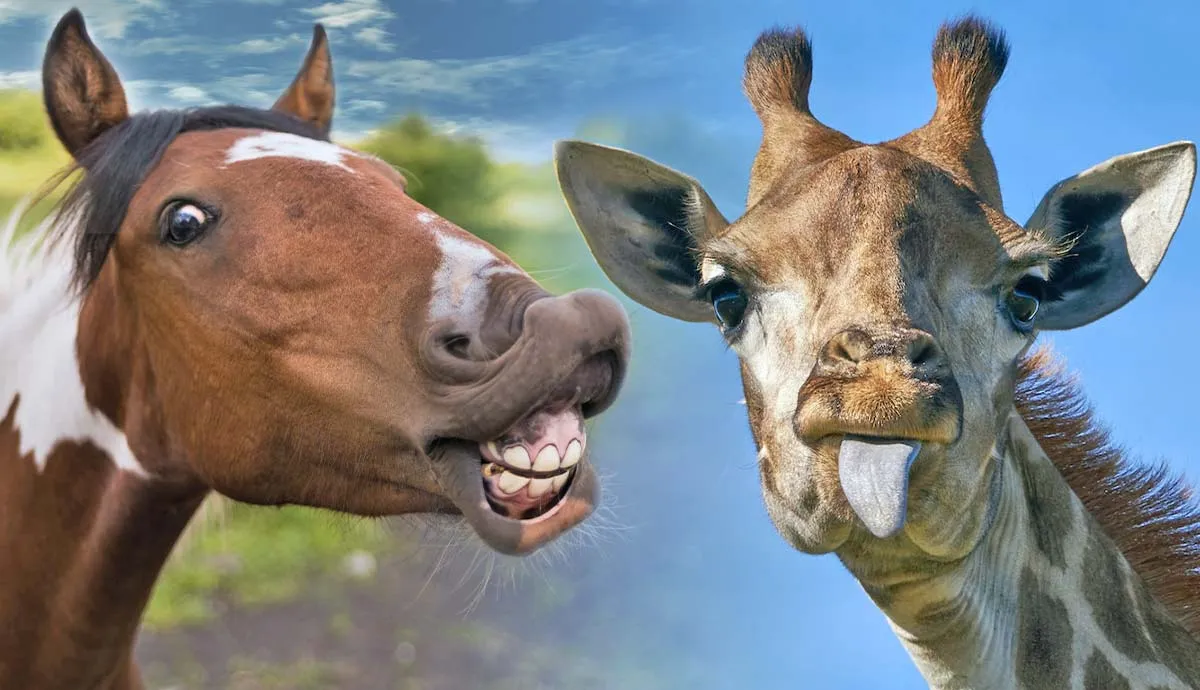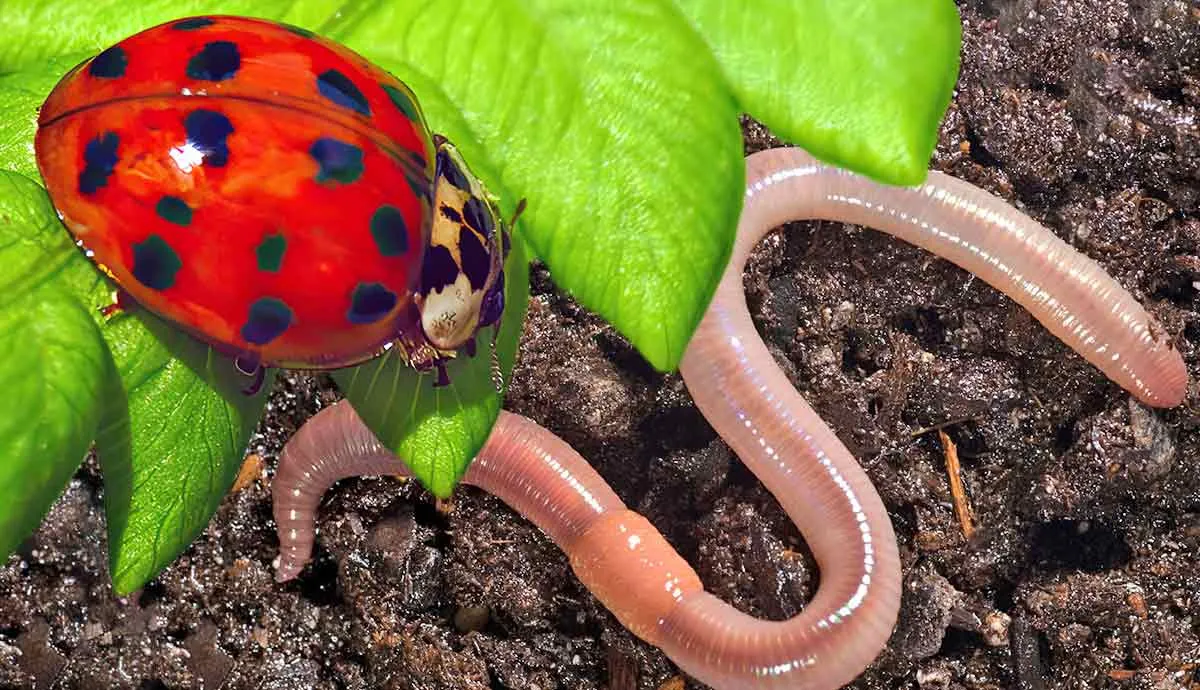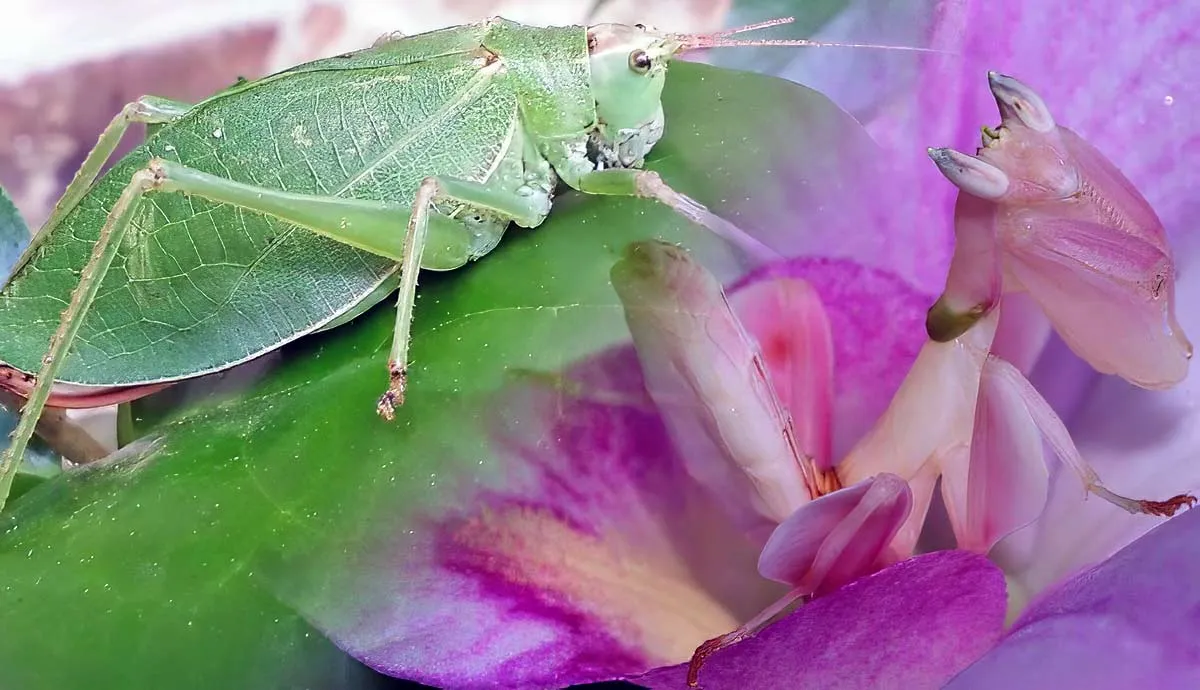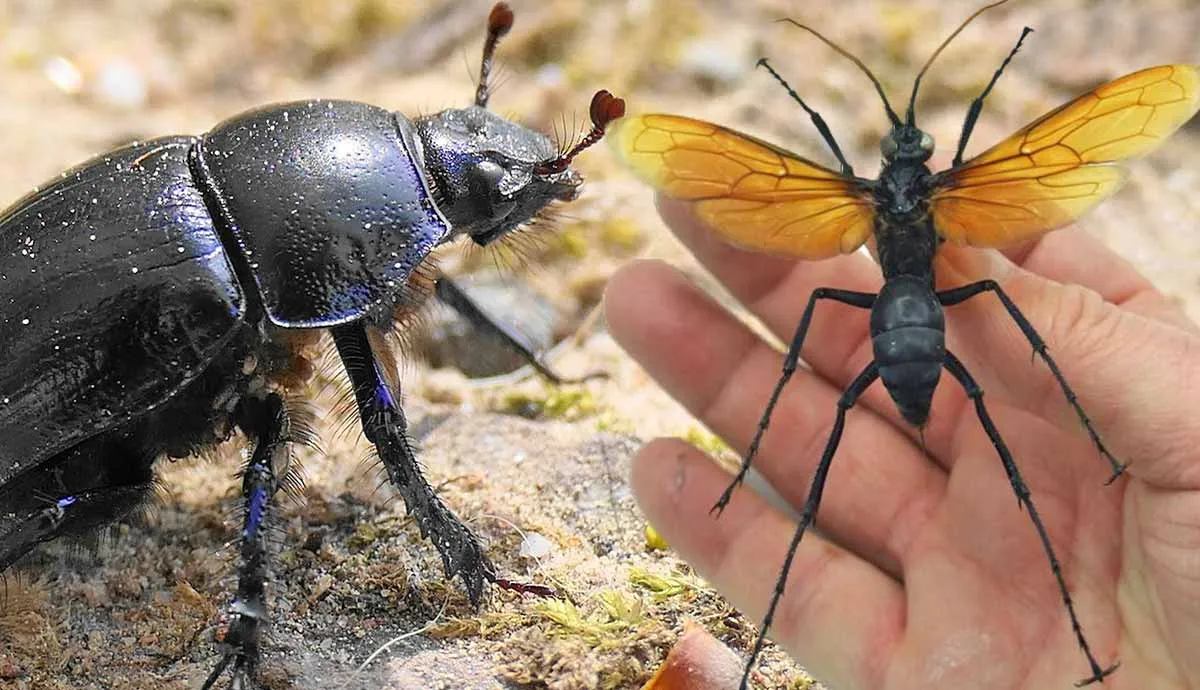Praying mantises are always interesting to find in nature, but did you know that you can keep them as pets? With over 2,400 species worldwide, it’s no wonder that there are a few that do well with human companionship.
Many praying mantises have aggressive tendencies that affect their ability to live with other mantises or insects, but most of them do perfectly fine with humans. Because most have similar care needs, it's easy to fall in love with mantis keeping and end up with many from this list.
Spiny Flower Mantis

The Spiny Flower Mantis (P. Wahlbergii) is best for beginner mantis keepers or those with some experience in insect care. These gorgeous mantids have white bodies with horizontal stripes that graduate from brown to green. They have purple eyes as well as black and yellow eye spots on their wings.
Because they are native to Africa, the Spiny Flower Mantis requires a higher temperature than other species. They’re also skittish, so they may not be the most rewarding to watch, and they should be kept alone to prevent cannibalization.
Carolina Mantis
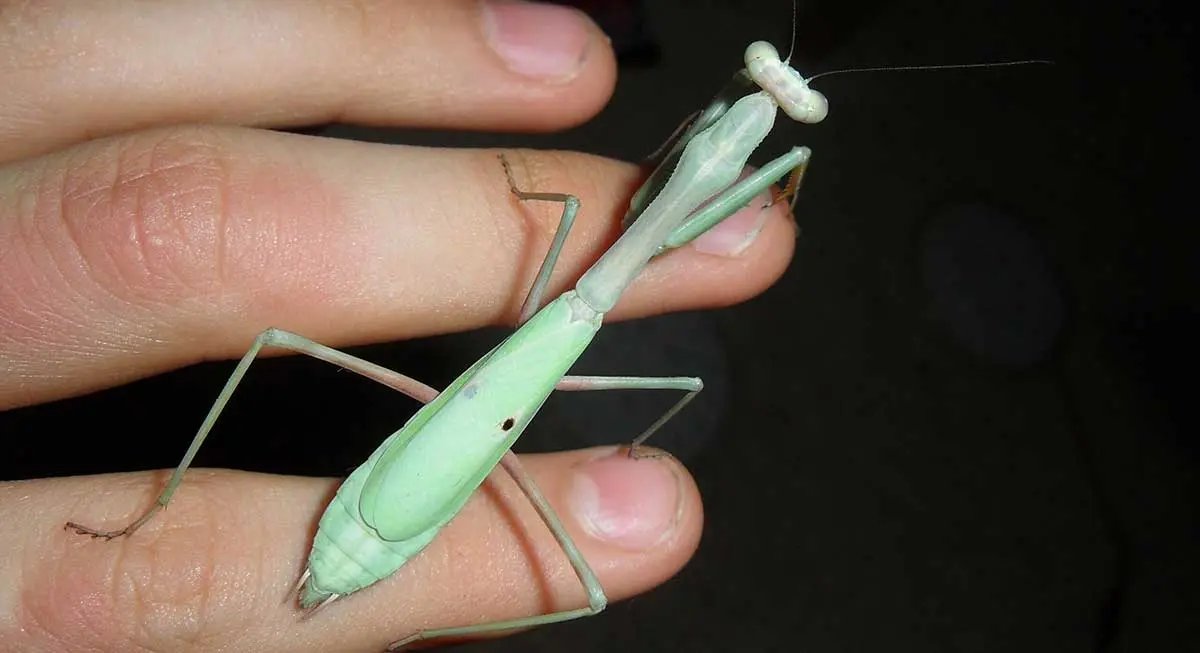
The Carolina Mantis (S. Carolina) is a fantastic choice for most beginners, and they work well as unique companions and fierce garden guardians. Many breed them simply to release for pest control.
The Carolina Mantis can be bright green or a more brown/gray color, with some variations showing spots or banding. Females are only slightly larger than males, measuring 5 to 6 cm compared to a male’s 4.5 cm body.
Their docile nature and sedentary behavior make them easy to handle, and a more rewarding companion for beginner keepers.
African Mantis

Another large mantis with a docile nature is the African Mantis (S. Lineola). Males grow up to 7 cm, while females usually stop growing around 8 cm.
Most African Mantises are green, although some show up with brown or green coloring. Regardless, they all have bright orange arms and yellow wings that work well to ward off predators.
While they’re friendly to humans, African Mantises should be housed individually so they don’t attack each other.
Chinese Mantis
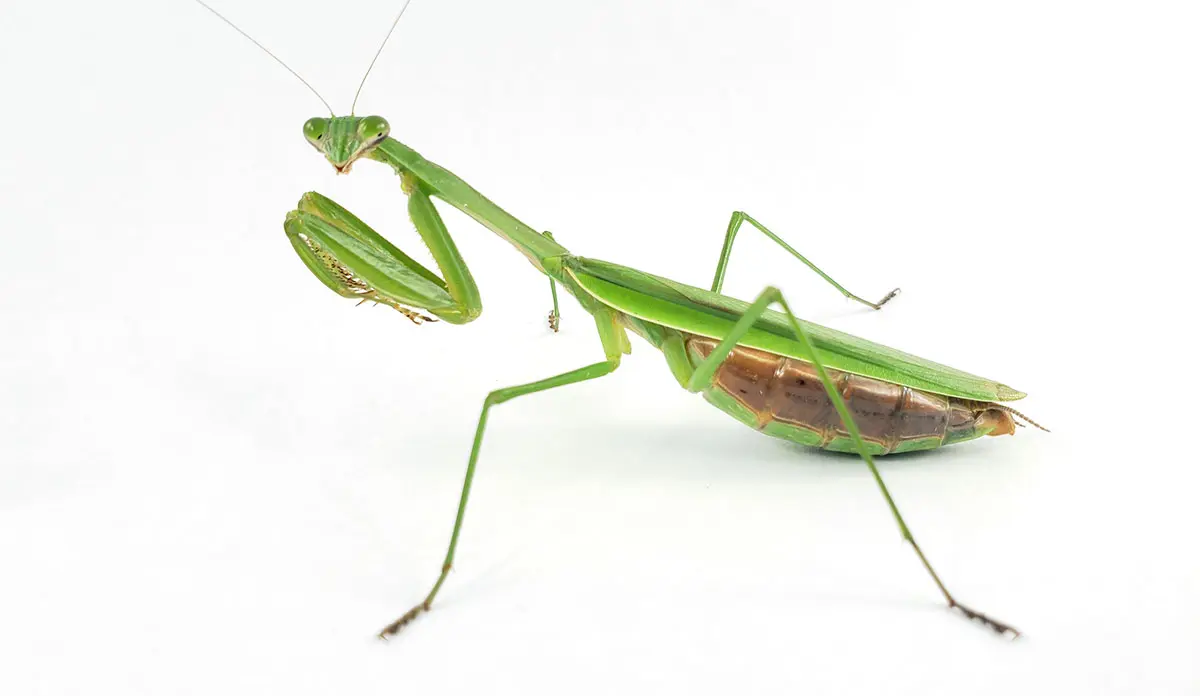
Chinese Mantises (T. Sinensis) are popular, affordable, and easy to care for, but they’re also a highly invasive species that should not be released into the wild. While they’re social with people, they tend to kill beneficial native insects (like the Carolina Mantis).
At 11 cm, these are one of the largest mantis species you can own as pets. In the wild, they’ve been known to catch small birds and reptiles. Unlike most other species, Chinese Mantises can be housed together successfully (as long as they have ample room and resources.
Giant Shield Mantis
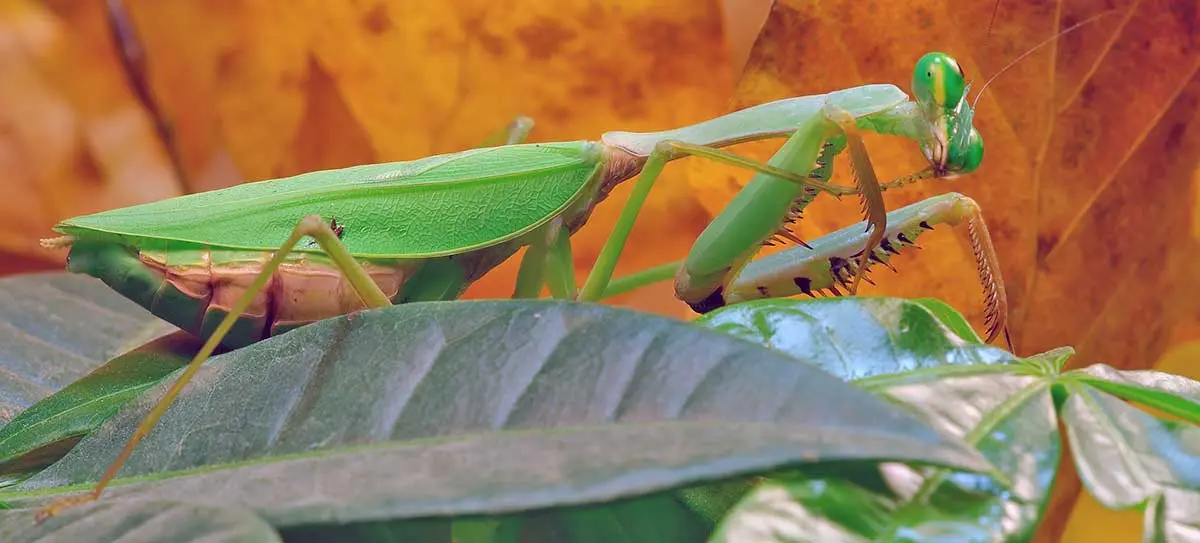
There are three types of Giant Shield Mantises often kept as pets: R. Basalis, R. Megaera, and R. Stalli. As nymphs, these members of the Rhombodera family grow a shield-like backplate that continues to protect them throughout their life.
Most Giant Shield Mantises are larger, about 9 to 11 cm, and have green bodies with bright orange or pink on their heads, legs, or wings.
While they require a bit more care, the Shield Mantises are a joy to watch. They’re very active and enjoy chasing down elusive prey for a more rewarding hunt.
Ghost Mantis
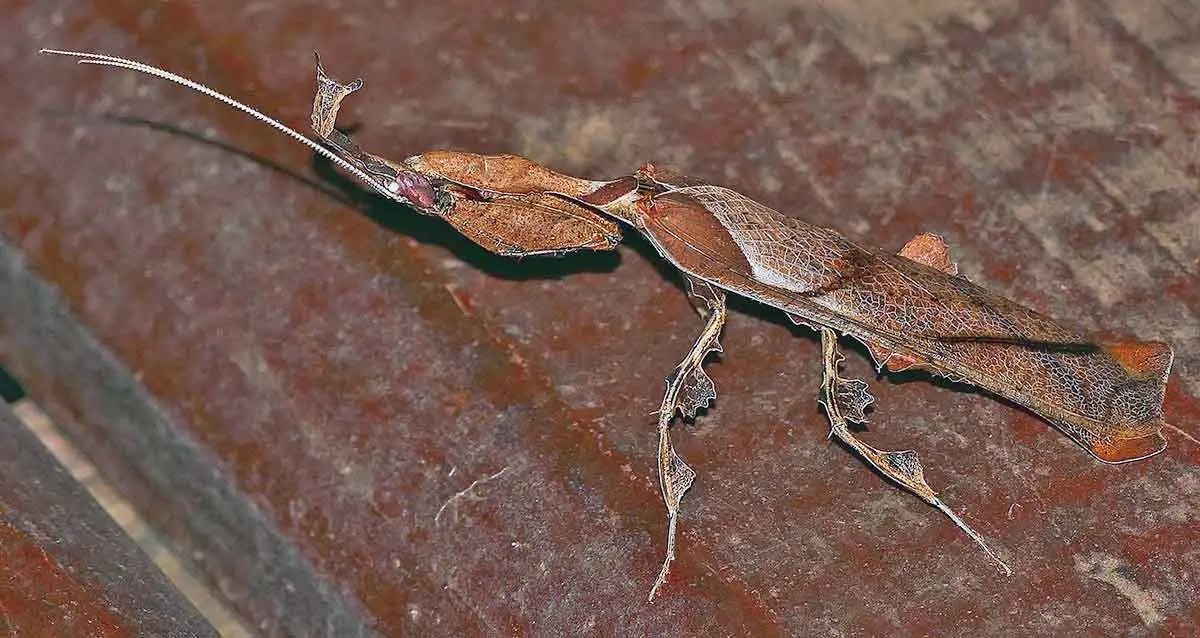
The Ghost Mantis (P. Paradoxa) gets its name from its resemblance to dead and dying leaves they disguise themselves as. Both males and females grow to about 5 cm, and they spend most of their time lying in wait for unsuspecting prey.
Male Ghost Mantises are identified by their longer, thinner wings. They’re also more mobile than the females, although not by much.
Ghost Mantises can be kept in communal housing, but they require a slightly higher humidity and temperature than most mantises recommended for beginners.
Dead Leaf Mantis
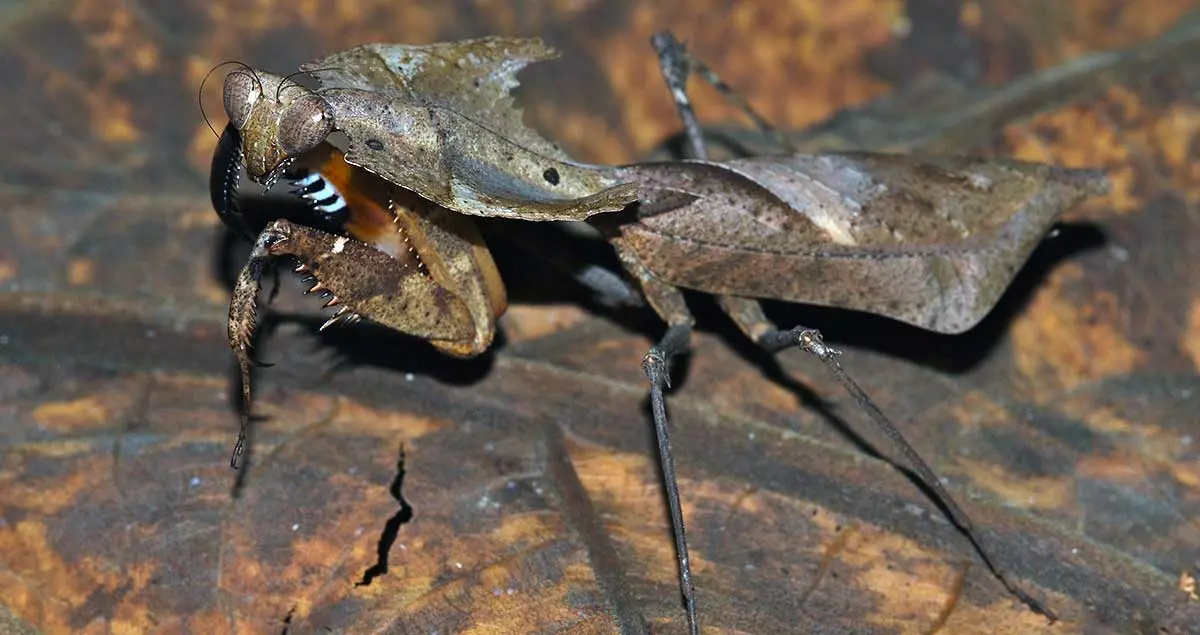
The Dead Leaf Mantis (D. Desiccata) looks like a more refined version of the Ghost Mantis, with spotted brown lobes that curl at the edges. They also prefer a higher temperature and humidity and may be more difficult to handle (running away or playing dead when threatened).
Dead Leaf Mantises have a greater display of sexual dimorphism. Females grow to about 9 cm, while males finish growing around 8 cm. While they can be skittish, Dead Leaf Mantises are fairly docile and get along well with each other when a proper community is set up.
Orchid Flower Mantis
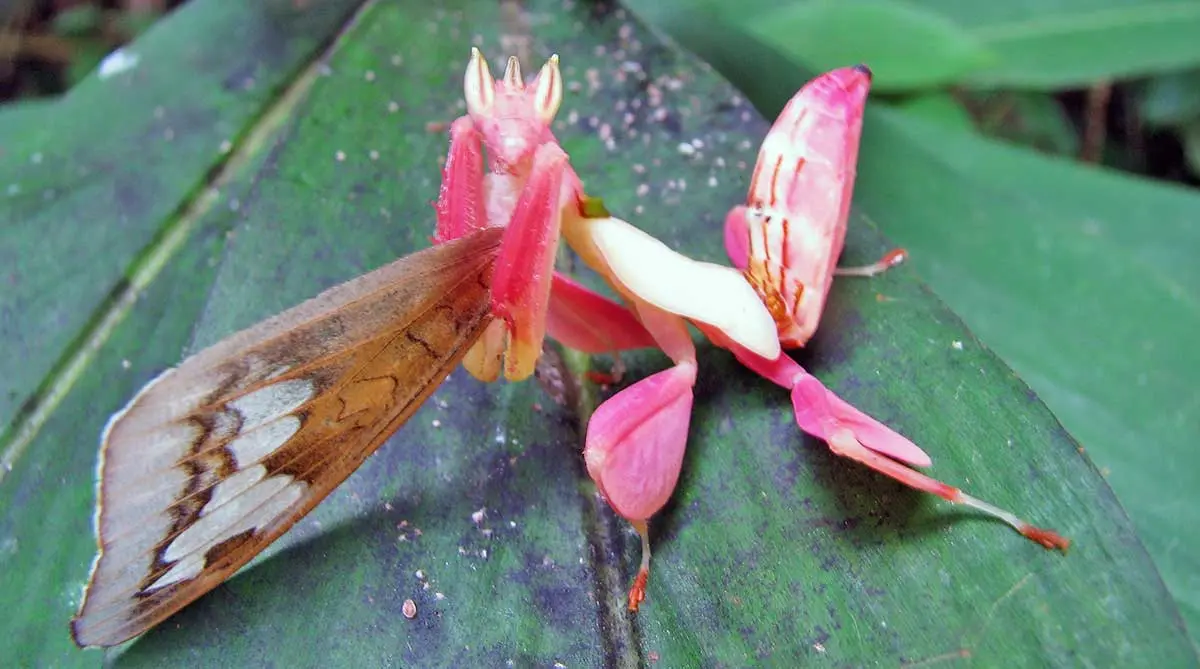
While Orchid Flower Mantises (H. Coronatus) are better suited for experienced keepers, they’re one of the most vibrant species you can care for. Orchid Mantises have white bodies with bright orange, pink, or green markings on the petal-like lobes of their body.
Orchid Flower Mantises also exhibit one of the widest discrepancies of sexual dimorphism, with females growing to 7 cm while males max out around 2.5 cm. Because of their smaller size and fragile bodies, Orchid Mantises aren’t in the running for the longest insect life cycle.
The temperature and humidity requirements of these India and Malaysia natives are higher than most other mantids, so keeping proper ranges can be difficult for new keepers. Orchid Mantises also need more cover and places to settle in than other species.
Their skittish nature makes them more difficult to handle, but they’re a fantastic ornamental insect that easily brightens any room.


